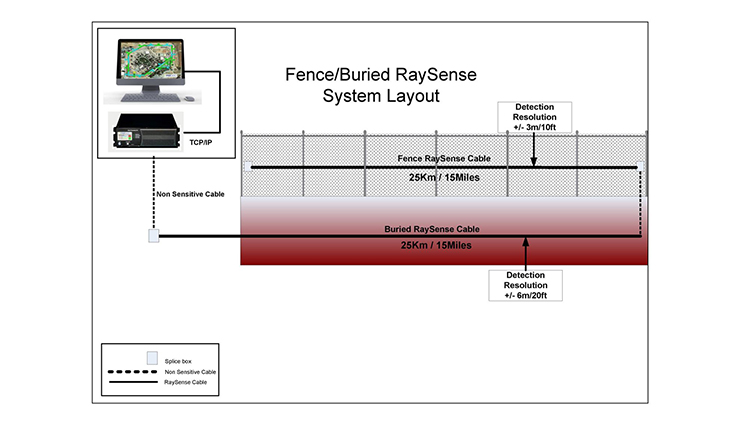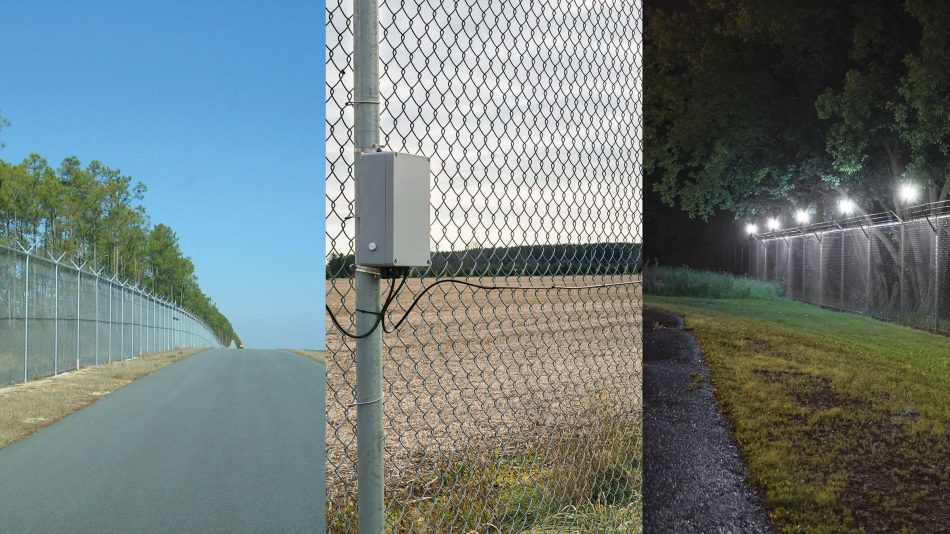Why Fiber Optic Protection Solutions Are the Future of Defense
The change to fiber optic safety and security systems notes a significant innovation in the world of security, driven by their remarkable data transmission abilities and strength to outside interferences. These systems not just promote faster and extra reliable communication yet likewise offer an affordable option with minimized maintenance demands. As the landscape of safety develops together with emerging technologies such as AI and IoT, the capacity for fiber optics to enhance and redefine protection infrastructures becomes progressively obvious. The effects of these innovations increase vital concerns regarding the future of safety and security actions and their effectiveness in an ever-changing atmosphere.
Advantages of Fiber Optic Systems
One of the primary advantages of fiber optic systems is their exceptional bandwidth capacity, which promotes the transmission of big quantities of information over fars away without considerable loss. This characteristic is especially helpful for safety and security applications that require the continuous monitoring and transfer of high-def video feeds, sensor information, and various other critical information. Fiber optics can accommodate the expanding needs of modern safety systems, guaranteeing that data remains undamaged and trustworthy.
In addition, fiber optic wires are much less prone to electromagnetic interference, which can be a significant concern in settings with different digital devices. This resistance boosts the stability of the information being sent, therefore minimizing the risk of data breaches or system failings. Fiber optic systems are inherently extra safe than traditional copper wires, as touching into a fiber optic line without detection is exceedingly tough.
The longevity of fiber optic wires also contributes to their allure. They are resistant to environmental aspects such as moisture and temperature level variations, decreasing maintenance costs and increasing system longevity. On the whole, these benefits placement fiber optic systems as a durable and reliable choice for modern-day safety frameworks, making certain trusted and secure data transmission.
Boosted Information Transmission Speed

The ability to transfer large amounts of information quickly facilitates the smooth integration of high-definition video feeds and progressed analytics. Safety and security systems can currently process and evaluate information in real-time, boosting action times and situational understanding. Furthermore, fiber optic connections sustain longer transmission ranges without deterioration of signal high quality, making them ideal for large safety networks.
The enhanced rate of fiber optic systems not just boosts the effectiveness of safety and security procedures yet additionally lowers latency. This is specifically important in essential circumstances where timely decision-making can avoid safety breaches or reduce potential threats. As companies continue to focus on safety and security and efficiency, the need for rapid and reliable information transmission will definitely strengthen fiber optic systems as a cornerstone of modern-day protection framework.
Resistance to Interference
Fiber optic protection systems constantly demonstrate phenomenal resistance to electro-magnetic interference, a critical benefit in environments susceptible to digital sound. Unlike typical copper wires, which can be negatively impacted by magnetic fields, radio frequency interference, and various other forms of electric disturbance, fiber optic cables make use of light to transfer information. This integral residential property ensures that the signals remain clear and unchanged, regardless of bordering digital activity.
Making use of glass or plastic fibers in fiber optic technology creates an obstacle against disturbance, permitting trustworthy information transmission even in difficult situations such as commercial centers, city areas with high digital web traffic, or locations near radio towers. This particular substantially minimizes the probability of signal degradation or loss, making fiber optic systems specifically suitable for security applications where integrity and precision of data are critical.
In addition, this resistance to interference enhances the overall efficiency and dependability of security systems, ensuring that surveillance and sharp systems function flawlessly. In a world where safety and security is significantly threatened by sophisticated innovations, the durability of fiber optic systems attracts attention as a pivotal function, enhancing their status as an essential element of modern safety facilities.
Cost-Effectiveness Over Time
Significant cost savings can be accomplished in time with the application of fiber optic safety systems. While the preliminary financial investment might seem higher compared to conventional copper-based systems, the long-term financial benefits become apparent via lowered functional and upkeep expenses (fiber security). Fiber optic cable televisions are inherently more durable and much less at risk to ecological elements, which translates to lower substitute and repair service costs over their lifespan
Moreover, fiber optic systems need much less power to operate, which better reduces power costs. Improved data transmission abilities enable fewer repeaters and amplifiers, decreasing equipment investment and enhancing installment processes. The scalability of these systems likewise adds to cost-effectiveness, as organizations can increase their safety framework without incurring substantial added expenses.
One more variable to consider is the boosted performance in monitoring and reaction capacities that optical fiber provide. Improved real-time information transmission can bring about quicker incident reaction times, possibly mitigating losses and responsibilities connected with safety and security breaches. In amount, the lasting benefits of fiber optic security systems not only justify the preliminary expenditure however additionally place them as a monetarily sensible choice for organizations seeking robust protection services.

Future Innovations in Safety And Security
Progressing modern technologies are readied to transform protection systems, integrating synthetic knowledge (AI) and artificial intelligence to enhance hazard discovery and reaction abilities. These advancements will permit security systems to image source evaluate huge quantities of information in real-time, recognizing patterns and abnormalities that show possible threats. This proactive approach will enable faster decision-making and much more efficient event reactions.
Furthermore, the consolidation of the Web of Things (IoT) is leading the way for interconnected safety and security gadgets, providing extensive monitoring and monitoring. Smart sensors can relay details concerning ecological modifications, while automated notifies can notify security personnel immediately of dubious tasks.
Additionally, the development of biometric innovations will better strengthen safety additional info systems. Facial acknowledgment, finger print scanning, and retina identification are coming to be extra advanced, providing layers of verification that are tough to bypass.
Final Thought
In conclusion, fiber optic protection systems represent a significant innovation in security technology, supplying unequaled data transmission rate, resistance to electromagnetic disturbance, and long-lasting cost-effectiveness. As the demand for advanced safety and security remedies continues to expand, the combination of optical fiber with emerging modern technologies such as AI, IoT, and biometrics will further improve security facilities (fiber security). The combination of this website these technologies will make sure a more protected and receptive atmosphere, strengthening fiber optics as a foundation of future protection systems
Comments on “Why a Fiber Security System Outperforms Traditional Security Networks”